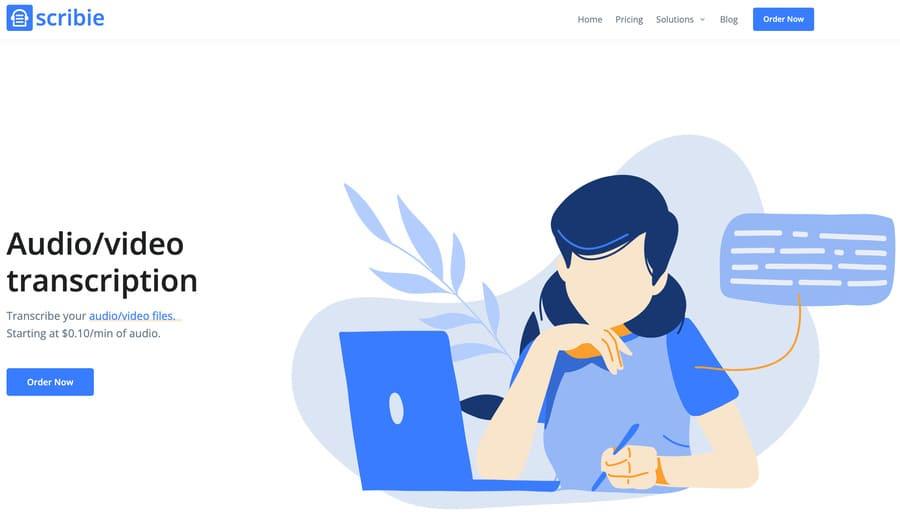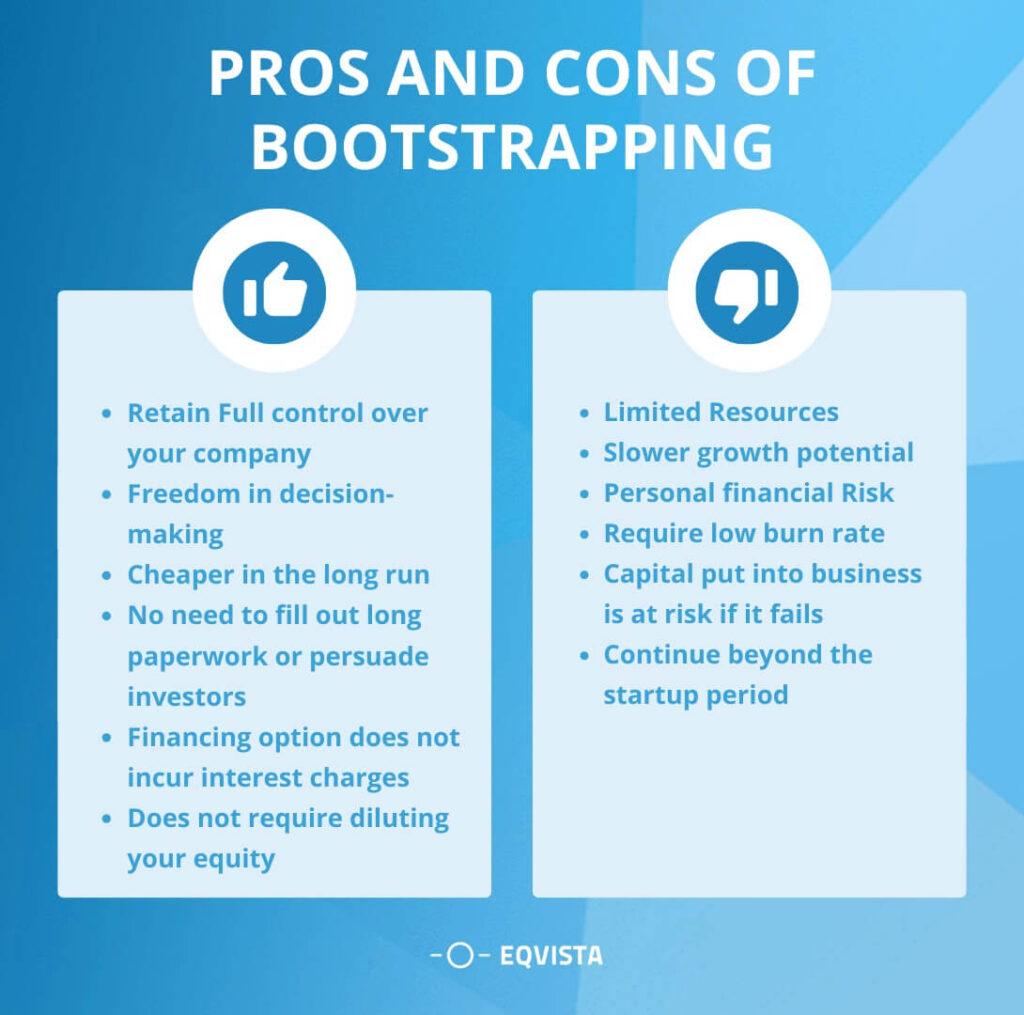
Are you looking to dip your toes into the world of online work but unsure where to start? If you’ve ever found yourself typing out notes during a lecture or transcribing meetings for friends, you might already have a valuable skill in your hands: transcription! The demand for transcription services has skyrocketed, and it’s a fantastic way to earn money from the comfort of your home. In this article, we’ll be diving into the 25 best online transcription jobs that can help you kickstart your career in this field. Whether you’re a complete beginner or someone looking to expand your skill set, we’ll provide you with everything you need to succeed. So, grab a cup of coffee, get cozy, and let’s explore how you can turn those typing skills into a rewarding online gig!
Understanding Transcription: What You Need to Know
Transcription is more than just typing what you hear; it’s an essential skill that bridges the gap between audio content and written documentation. Whether you’re looking to transcribe interviews, podcasts, or medical reports, understanding the nuances of transcription can significantly boost your efficiency and accuracy. Here’s what you need to know to get started on the right foot.
First and foremost, accuracy is key. Transcription requires a keen ear and the ability to discern nuances in speech. When listening to recordings, pay attention to various accents, dialects, and speech patterns. Taking notes while listening can help you remember important details, making it easier to produce a high-quality transcript.
Next, familiarize yourself with transcription tools and software. There are numerous platforms available that can facilitate the transcription process, from automated transcription services to specialized software that aids manual transcription. Popular choices include:
- Express Scribe: A great tool for manual transcription with audio playback control features.
- Otter.ai: Offers automated transcription with collaboration features.
- Transcribe: A web-based tool that simplifies the transcription of audio files.
Another crucial aspect is formatting. Different industries have specific formatting requirements. Familiarize yourself with style guides relevant to your field—be it APA, MLA, or a client-specific format. Here’s a quick reference table for common transcription styles:
| Style Guide | Intended Use | Key Features |
|---|---|---|
| APA | Academic Writing | Author-date citation style |
| MLA | Literature and Humanities | Works Cited pages, parenthetical citations |
| Chicago | Publishing | Notes and bibliography style |
In addition, consider the ethical implications of transcription work. This includes respecting confidentiality agreements and obtaining necessary permissions. When transcribing interviews or personal stories, always ensure the privacy and consent of the speakers are upheld. This not only builds trust but also enhances your reputation as a reliable transcriptionist.
practice makes perfect. Start with simpler tasks and gradually move to more complex projects as you gain confidence. Seek feedback from peers or mentors, as constructive criticism can provide valuable insights to refine your skills. Remember, the goal is to produce transcripts that are not only readable but also true to the original audio content.

The Different Types of Transcription Jobs Available
Transcription jobs come in various forms, each catering to different industries and skill sets. Understanding the types available can help you choose the right path that aligns with your interests and expertise. Here’s a breakdown of the major categories you might consider:
- General Transcription: This involves transcribing interviews, podcasts, and other audio files without specialized knowledge.
- Medical Transcription: Requires training and familiarity with medical terminology to transcribe healthcare-related audio.
- Legal Transcription: Involves transcribing court hearings, depositions, and other legal proceedings, usually requiring knowledge of legal jargon.
- Academic Transcription: Focused on transcribing lectures, research interviews, and academic discussions, often needing an understanding of specific subjects.
- Real-Time Transcription: Involves transcribing spoken words instantaneously, often used for live events and webinars, requiring exceptional typing speed and accuracy.
Each of these job types requires a different level of skill and experience, as well as varying equipment and software. For instance, medical and legal transcription often necessitate specialized software and a background in their respective fields. On the other hand, general transcription can be more accessible for beginners looking to dip their toes in.
| Type of Transcription | Skills Required | Average Pay |
|---|---|---|
| General Transcription | Basic typing, good listening | $15-$25/hour |
| Medical Transcription | Medical terminology, attention to detail | $20-$40/hour |
| Legal Transcription | Legal terminology, accuracy | $25-$50/hour |
| Academic Transcription | Subject knowledge, research skills | $15-$30/hour |
| Real-Time Transcription | Fast typing, quick comprehension | $30-$60/hour |
In addition to the types of transcription jobs, consider the different formats you might be working with. Audio and video files can vary in quality, and you might need to use different tools to enhance your output. Some transcriptionists specialize in creating captions for videos, which is another lucrative avenue to explore.
As a beginner, think about what excites you the most. If you are passionate about healthcare, medical transcription might be rewarding. If you enjoy the legal field, then legal transcription could be your niche. The key is to find a type that not only pays well but also keeps you engaged and motivated.

Essential Skills for Aspiring Transcriptionists
For anyone looking to break into the world of transcription, developing a robust set of skills is key to standing out in a competitive market. First and foremost, excellent listening skills are non-negotiable. Transcriptionists must be able to understand various accents, dialects, and audio qualities, which often requires intense focus. If you find yourself zoning out during long recordings, practice will help sharpen your concentration over time.
Next on the list is typing proficiency. A quick and accurate typing speed is crucial for meeting deadlines and ensuring you get paid by the hour for your work. Aim for at least 60 words per minute with minimal errors. Consider taking typing tests and practicing through online platforms to hone your skills.
Additionally, having a firm grasp of grammar, punctuation, and spelling is vital. Transcription is not just about typing what you hear; it’s about conveying that information clearly and accurately. Brush up on your grammar rules and familiarize yourself with common transcription conventions, like how to handle abbreviations and timestamps.
Another essential skill is research ability. Transcriptionists often encounter unfamiliar terminology, especially in specialized fields like medicine or law. Knowing how to effectively search for and verify information will not only improve your accuracy but also enhance your credibility with clients.
Moreover, familiarity with transcription software can give you a competitive edge. Tools like Express Scribe and TranscribeMe streamline the workflow and often feature helpful functionalities like playback controls and text expansion shortcuts. Investing time in learning these tools will save you valuable time and make your work more efficient.
don’t underestimate the importance of time management and organizational skills. As a transcriptionist, you may juggle multiple projects with varying deadlines. Creating a schedule, setting priorities, and staying organized will help you deliver quality work on time, every time.
| Essential Skills | Description |
|---|---|
| Listening Skills | Ability to comprehend various accents and audio qualities. |
| Typing Proficiency | Aim for at least 60 WPM with minimal errors. |
| Grammar and Spelling | A strong grasp of language conventions is essential. |
| Research Skills | Ability to find and verify unfamiliar terms quickly. |
| Software Familiarity | Knowledge of tools like Express Scribe to enhance efficiency. |
| Time Management | Organizing tasks to meet multiple deadlines effectively. |

Finding the Right Online Transcription Platforms
In the search for the ideal online transcription platform, there are several critical factors to consider that can make or break your experience as a transcriber. Selecting the right service not only affects your workflow but also your earning potential. Here are some key aspects to keep in mind:
- Ease of Use: Choose a platform that features an intuitive interface. A steep learning curve can be frustrating, especially for beginners. Look for user-friendly tools that allow you to focus on transcribing rather than navigating complex menus.
- Audio Quality: High-quality audio files lead to better transcription accuracy. Ensure the platform you select supports various audio formats and offers options for handling poor-quality recordings.
- Payment Structure: Different platforms have varying payment models. Some pay per audio minute, while others may offer a flat rate per project. Understand how and when you’ll be compensated to manage your earnings effectively.
- Support Resources: Platforms that offer comprehensive tutorials and responsive customer support can significantly enhance your learning curve. Check for community forums or chat support to assist you in case of issues.
- Job Availability: It’s essential to choose a platform that has a consistent flow of transcription jobs. Research the platform’s reputation among transcribers to gauge the availability of work.
When evaluating potential platforms, consider testing a few options to find the one that aligns best with your work style and goals. Some platforms may offer trial periods or initial tasks that don’t require a commitment, allowing you to assess their suitability without financial risk.
Another aspect to consider is the community surrounding the platform. Engaging with fellow transcribers can provide valuable insights and support. Look for platforms that foster a strong community, where you can share experiences, ask questions, and receive feedback.
Lastly, don’t underestimate the importance of security and privacy. Choose platforms that prioritize data protection and confidentiality, especially if you’re working with sensitive content. This not only establishes trust but also safeguards your professional reputation.
| Feature | Importance |
|---|---|
| Ease of Use | Reduces learning time and increases productivity. |
| Audio Quality | Impacts transcription accuracy and efficiency. |
| Payment Structure | Determines your earning potential and cash flow. |
| Support Resources | Enhances your ability to solve problems quickly. |
| Job Availability | Ensures a steady income and consistent work opportunities. |

Setting Up Your Home Office for Maximum Productivity
Creating a home office that enhances productivity is essential, especially when diving into online transcription jobs. Here are some practical tips to help you set up your workspace effectively:
- Choose the Right Location: Find a quiet space that minimizes distractions. Ideally, this should be away from high-traffic areas in your home.
- Invest in Ergonomic Furniture: A comfortable chair and an adjustable desk can make a significant difference. Look for options that support good posture, as you’ll be spending long hours working.
- Optimize Your Tech: Ensure you have a reliable computer, high-speed internet, and good quality headphones for listening to audio files clearly. Also, consider using a foot pedal for easier transcription.
- Lighting Matters: Natural light boosts mood and productivity. If that’s not an option, invest in quality task lighting that reduces eye strain.
Next, keeping your workspace organized can drastically improve your workflow. A clutter-free environment leads to a clutter-free mind. Here are some organization tips:
- Use Storage Solutions: Invest in shelves, filing cabinets, or storage boxes to keep your documents and materials neatly organized.
- Keep Frequently Used Items Within Reach: Use desk organizers to store pens, notebooks, and other essentials at arm’s length.
- Implement a Digital Filing System: Organize your computer files logically, making them easy to find when you need them. Use folders and labels that make sense to you.
Your mental state is just as important as your physical setup. To maintain focus and motivation, consider these tips:
- Set Clear Boundaries: Communicate with family or roommates about your work hours to reduce interruptions.
- Establish a Routine: Create a daily schedule that includes breaks to recharge your mind. Regular intervals of work and rest can boost productivity.
- Incorporate Personal Touches: Decorate your space with items that inspire you, whether it’s artwork, plants, or motivational quotes.
Lastly, don’t forget to continuously evaluate your setup. What works today might not work tomorrow. Take note of what hinders your productivity and make adjustments accordingly. Your home office should evolve with your work style. By implementing these strategies, you’ll be well on your way to creating an efficient workspace that allows you to excel in your online transcription career.

Tools and Software That Make Transcription Easier
Transcription can be a rewarding career, especially with the help of the right tools and software. Leveraging technology not only enhances your efficiency but also improves the accuracy of your work. Here’s a roundup of some of the best tools that can make your transcription journey smoother.
1. Automated Transcription Software
Automated transcription tools can save you a significant amount of time. These programs utilize advanced algorithms and artificial intelligence to convert audio files into text. Some popular choices include:
- Otter.ai: Great for meetings and interviews, offers real-time transcription.
- Rev: Provides both automated and professional transcription services.
- Sonix: Known for its speedy processing and user-friendly interface.
2. Dictation Software
If you prefer speaking to typing, dictation software could be your best friend. Programs like Dragon NaturallySpeaking and Google Docs Voice Typing allow you to dictate audio, turning your words into written text effortlessly. This can be particularly advantageous for lengthy documents.
3. Audio Playback Tools
Listening to audio files can sometimes be challenging, especially if the quality is poor. Tools that allow you to adjust playback speed or create shortcuts for pausing and replaying sections can be invaluable. Consider using:
- Express Scribe: A professional audio player with features specifically designed for transcription.
- Transcribe: An online tool that lets you slow down audio, making it easier to catch every word.
4. Annotation and Note-Taking Software
Capturing key points and ideas while transcribing can enhance your final output. Tools like Evernote or Notion not only allow you to take notes but also organize them in a way that makes sense for your projects. This can help you stay on track and ensure you don’t miss crucial elements in your transcription.
5. Quality Control and Editing Tools
Editing is a crucial step in the transcription process. Utilizing grammar and spell check tools like Grammarly ensures your final document is polished and professional. Collaboration tools, such as Google Docs, also allow for easy sharing and feedback from clients or colleagues.
6. Cloud Storage and Backup Solutions
don’t underestimate the importance of secure storage. Services like Dropbox and Google Drive not only provide safe storage for your files but also enable easy access from anywhere. This is particularly useful for freelance transcriptionists who may work from different locations.
By incorporating these tools and software into your transcription routine, you can streamline your processes, enhance your productivity, and ultimately provide better service to clients. Embrace technology, and watch your transcription career flourish!
Developing a System for Efficient Transcription Work
Creating a streamlined system for transcription work can significantly enhance your productivity and accuracy. Whether you’re just starting or looking to improve your existing processes, implementing a few key strategies will set you on the path to success.
First, consider the tools at your disposal. There are numerous transcription software options that can help you work more efficiently. Look for features such as:
- Audio playback controls: Speed adjustments, rewind, and fast-forward functions can save you time.
- Text expansion tools: These can help reduce repetitive typing, allowing you to focus on the content.
- Integration capabilities: Choose software that can easily work with your existing applications.
Next, organization plays a vital role in effective transcription. Start by creating a dedicated workspace free from distractions. This should include:
- A comfortable chair and desk: Ergonomics can help you maintain focus over longer periods.
- Clear file management: Organize audio files by date, client, or project to find them quickly.
- Consistent naming conventions: Use recognizable file names to avoid confusion later.
Time management is another crucial aspect. Establish a routine that allows you to set aside dedicated hours for transcription. Using a timer can help you stay on track, encouraging short breaks to prevent burnout. Consider the Pomodoro Technique, where you work for 25 minutes, then take a 5-minute break to recharge.
Moreover, developing a glossary of commonly used terms specific to your transcription niche can enhance your efficiency. This allows you to quickly reference and type industry-specific jargon without hesitation. Here’s a simple example of what that could look like:
| Term | Definition |
|---|---|
| ASR | Automatic Speech Recognition |
| Dictation | Speech recognized by a machine |
| Timestamp | Marking time in the audio file |
Another vital component is your workflow. Establish a reliable process from receiving the audio file to delivering the final transcript. This could include:
- Listening to the audio first: Familiarize yourself with the content before starting transcription.
- Transcribing in segments: Break the audio into manageable parts to maintain concentration.
- Proofreading: Always review your work to catch errors before submission.
Lastly, building a support network can be incredibly beneficial. Join online forums or social media groups focused on transcription. These communities offer a platform to ask questions, share experiences, and learn from others in the field. Connecting with fellow transcribers can also motivate you to stay committed to your work.
By integrating these strategies into your transcription workflow, you’ll not only work more efficiently but also enhance the quality of your output—setting you up for long-term success. Remember, every step you take toward improving your system is a step toward becoming a more proficient transcriptionist.
How to Build a Strong Portfolio as a Beginner
Building Your Portfolio
As a beginner in the transcription field, creating a strong portfolio is essential for making a great first impression on potential employers. A well-crafted portfolio showcases your skills and highlights your commitment to quality work. Here are some key steps to help you develop a standout portfolio:
- Include Sample Transcriptions: Start by selecting a variety of transcription samples that demonstrate your proficiency. Aim for a mix of formats, such as interviews, podcasts, and lectures. Make sure these samples are error-free, well-formatted, and easy to read.
- Highlight Relevant Skills: List specific skills that are important for transcription work, such as attention to detail, typing speed, and familiarity with transcription software. You can also include any specialized knowledge you have in certain fields, like medical or legal transcription.
- Showcase Your Experience: If you have prior experience, even if it’s informal, make sure to include it. Volunteer work, internships, or even personal projects can demonstrate your competency and dedication to the craft.
- Get Testimonials: If possible, ask previous clients or instructors for testimonials that speak to your work ethic and quality. Positive feedback can significantly enhance your credibility.
Organizing your portfolio effectively is just as important as the content. Consider the following tips:
- Use a Clean Layout: Design your portfolio with a professional layout that is easy to navigate. Avoid clutter and use headings/subheadings to guide potential clients through your work.
- Include a Personal Touch: A brief introduction about yourself can help clients connect with you. Share your passion for transcription and any relevant background information.
- Keep It Updated: Regularly refresh your portfolio with your latest work and skills. An up-to-date portfolio reflects your growth and commitment to the profession.
Lastly, consider hosting your portfolio online. This makes it easily accessible to potential employers. Platforms like WordPress or personal websites allow you to create a professional-looking site without needing extensive technical skills. Here’s a simple structure you might consider for your online portfolio:
| Section | Description |
|---|---|
| Home | A brief introduction and overview of your skills. |
| Samples | Links or downloadable files of your best transcription work. |
| Testimonials | Quotes from clients or peers about your work. |
| Contact | An easy way for potential clients to reach you. |
By following these guidelines, you’ll create a portfolio that not only showcases your abilities but also increases your chances of landing transcription jobs. Remember, your portfolio is your personal marketing tool, so put in the effort to make it shine!

Networking Tips to Connect with Other Transcriptionists
Building a network of fellow transcriptionists can significantly enhance your career and provide valuable resources as you embark on your journey in the transcription field. Here are some effective strategies to help you connect with others in this unique profession:
- Join Online Communities: Look for forums, Facebook groups, and LinkedIn communities specifically catering to transcriptionists. Engaging in discussions can help you share experiences and tips, and you might even find mentors willing to guide you.
- Attend Webinars and Workshops: Many organizations offer online training sessions and workshops for transcriptionists. These events not only provide valuable information but also an opportunity to meet like-minded individuals.
- Participate in Social Media: Use platforms like Twitter and Instagram to follow and interact with transcriptionists. Posting about your journey can attract others to connect with you.
- Network at Conferences: If possible, attend transcription or freelance-related conferences. The in-person interaction can foster deeper connections and open doors to collaborative opportunities.
- Collaborate on Projects: Consider teaming up with other transcriptionists for larger projects or to share workloads. Collaboration can help you learn new techniques and expand your professional network.
Don’t hesitate to reach out to transcriptionists you admire or have interacted with online. A simple message expressing your interest in their work can lead to meaningful conversations. Remember to be genuine; people are more likely to respond positively when approached with sincerity.
Another great way to build connections is through sharing your work. Whether it’s blogging about transcription, creating YouTube tutorials, or posting tips on platforms like Medium, showcasing your expertise can attract others in the field. This often leads to networking opportunities as others may reach out for advice or collaboration.
Here’s a quick overview of networking strategies in a table format:
| Networking Strategy | Description |
|---|---|
| Online Communities | Join forums and social media groups to connect and share insights. |
| Webinars | Attend virtual workshops to learn and meet other professionals. |
| Social Media | Use platforms like Twitter to engage with the transcription community. |
| Conferences | Participate in industry conferences for in-person networking. |
| Collaborations | Work together on projects for shared learning and networking. |
By actively seeking connections and nurturing those relationships, you’ll not only enhance your skills but also create a supportive network that can guide you through the ups and downs of your transcription career. Remember, everyone was a beginner at some point, and learning from one another is key to success in this field.

Navigating Challenges and Overcoming Common Obstacles
Diving into the world of online transcription jobs can feel overwhelming, especially for beginners. Many aspiring transcriptionists encounter obstacles that can hinder their progress and confidence. However, recognizing and addressing these challenges early on can lead to a more fruitful career in transcription.
One significant hurdle is the learning curve associated with transcription software and tools. Many new transcriptionists may feel intimidated by the technology. To overcome this, consider investing time in online tutorials specific to the software you will be using. Familiarize yourself with shortcuts and features that can enhance your efficiency. Being proficient with transcription tools not only boosts your speed but also your confidence.
Additionally, time management is crucial in this line of work. Beginners often struggle to balance transcription tasks with other responsibilities. Here are some strategies to effectively manage your time:
- Set specific working hours dedicated to transcription.
- Break large projects into smaller, manageable chunks.
- Use a timer to stay focused during transcription sessions.
Another common obstacle is finding reliable clients. Many novice transcriptionists may feel discouraged by the high competition in the field. To navigate this, build a strong online presence. Create a professional profile on freelance platforms and showcase your skills through samples or a portfolio. Networking within transcription communities can also lead to referrals and job opportunities.
Sometimes, the fear of feedback can hold beginners back. It’s natural to worry about receiving criticism, especially when just starting. However, constructive feedback can be an invaluable tool for growth. Embrace it with an open mind, and use it to refine your skills. Remember, every expert was once a beginner, and feedback is part of the learning process.
A final challenge worth addressing is maintaining motivation when faced with setbacks. Rejections and difficult projects are part of any job, and transcription is no exception. To stay motivated, set small, achievable goals and celebrate each milestone. Joining online forums or support groups can also provide encouragement and insights from peers who are on the same journey.
| Challenge | Solution |
|---|---|
| Learning Software | Invest in tutorials and practice regularly. |
| Time Management | Set dedicated hours and use timers. |
| Finding Clients | Build a strong profile and network. |
| Fear of Feedback | Embrace criticism as a growth tool. |
| Maintaining Motivation | Set goals and join supportive communities. |
By acknowledging these common hurdles and implementing practical solutions, you can pave the way for a successful career in online transcription. The journey may be challenging, but with determination and the right strategies, you’ll find yourself thriving in this rewarding field.

Time Management Strategies for Transcription Success
When diving into transcription work, effective time management is crucial. The ability to transcribe quickly and accurately while meeting deadlines can significantly impact your success. Here are some strategies to help you maximize your productivity:
- Set Clear Goals: Before starting your transcription tasks, outline what you want to achieve. Whether it’s a certain number of audio minutes transcribed or mastering a new software tool, having clear objectives will keep you focused.
- Prioritize Your Tasks: Not all transcription jobs are created equal. Identify high-priority tasks based on deadlines or payment rates and tackle them first. This ensures that you’re working on what matters most.
- Use a Timer: Implement the Pomodoro Technique by working in short bursts, typically 25 minutes, followed by a 5-minute break. This method can improve focus and stamina over long transcription sessions.
- Create a Dedicated Workspace: A clutter-free and organized workspace can significantly enhance your concentration. Make sure your transcription area is comfortable and equipped with the necessary tools, such as headphones and foot pedals.
- Limit Distractions: Turn off notifications on your devices and designate specific times for checking emails or social media. A focused environment allows for quicker and more effective transcription.
Another key aspect of managing your time effectively is mastering the tools of the trade. Familiarize yourself with transcription software that can streamline the process. Whether it’s using shortcuts for playback speed or text expansion tools, investing time to learn these features can save you hours in the long run.
Additionally, consider creating a flexible schedule that accommodates your peak productivity hours. Some people work better in the early morning, while others may find they’re more alert in the evening. Adjusting your workflow to match your natural rhythms can lead to greater efficiency.
| Time Management Strategy | Benefit |
|---|---|
| Goal Setting | Increased clarity and focus |
| Task Prioritization | Effective completion of high-impact tasks |
| Pomodoro Technique | Enhanced concentration and endurance |
| Dedicated Workspace | Minimized distractions, improved comfort |
| Tool Mastery | Increased speed and accuracy |
don’t underestimate the power of reflection. At the end of each week, review your performance and identify areas for improvement. This reflective practice can help you fine-tune your strategies, leading to better time management and ultimately greater transcription success.
Continuing Education: Expanding Your Skills in Transcription
In the world of transcription, staying ahead of the curve means continually honing your skills. As a beginner looking to carve a niche in this field, investing in your education can significantly enhance your opportunities and efficiency. Here are several avenues to consider:
- Online Courses: Numerous platforms offer courses tailored specifically for transcription. These include video tutorials, interactive exercises, and assessments that help you grasp the necessary skills.
- Workshops and Webinars: Participating in live sessions can provide valuable insights from industry experts. These forums are perfect for asking questions and receiving immediate feedback.
- Practice Tests: Websites often provide transcription practice tests that mimic real-world scenarios. Completing these can build your confidence and speed.
- Industry Blogs and Forums: Engaging with online communities can keep you updated on trends and tips from experienced transcribers. Don’t hesitate to ask questions!
Moreover, understanding software tools that enhance transcription accuracy is vital. Familiarizing yourself with programs such as:
| Software | Key Features |
|---|---|
| Express Scribe | Foot pedal support, variable speed control |
| Transcribe | AI-powered transcription, easy text editing |
| Otter.ai | Real-time transcription, collaboration tools |
Another crucial skill to develop is your typing speed. Aim to increase your words per minute (WPM) to improve your efficiency. Regular practice using typing software or games can help you reach your goals. Here’s how you can approach it:
- Set Daily Goals: Start with realistic targets and gradually increase them.
- Use Online Typing Tests: Websites like Typing.com offer free tests to track your progress over time.
- Practice with Transcripts: Take existing audio scripts and transcribe them as practice to improve your speed and accuracy.
Lastly, networking is an invaluable asset in the transcription industry. Building connections with other transcribers and professionals can open doors to new job opportunities. Consider:
- Joining Professional Associations: Organizations like the American Association of Electronic Reporters and Transcribers can provide resources and networking opportunities.
- Utilizing Social Media: Platforms like LinkedIn or Facebook groups can connect you with peers, mentors, and job listings.
- Attending Industry Conferences: These events are great for learning from leaders in the field and expanding your professional circle.
By prioritizing ongoing education and actively engaging with the transcription community, you will not only enhance your skills but also position yourself as a competitive candidate in the job market. Embracing a mindset of continuous learning is key to long-term success in this field.

Real Stories from Successful Online Transcriptionists

Tips for Maintaining Work-Life Balance While Transcribing
Transcribing can often lead to long hours spent in front of a screen, which can blur the lines between work and personal life. To maintain a healthy balance, consider implementing the following strategies:
- Set Clear Boundaries: Designate specific work hours and stick to them. This will help you avoid the temptation to work late into the night. Communicate these hours to your family and friends to minimize interruptions.
- Create a Dedicated Workspace: Establish a comfortable and distraction-free environment for transcribing. This not only boosts productivity but also reinforces the mental separation between work and personal life.
- Take Regular Breaks: Utilize the Pomodoro technique by working for 25 minutes and then taking a 5-minute break. Use this time to stretch, hydrate, or simply step away from your workspace to clear your mind.
- Prioritize Tasks: Make a to-do list at the start of each day, ranking tasks by importance. This helps you focus on what truly matters and reduces the feeling of being overwhelmed.
- Engage in Hobbies: Set aside time for activities you enjoy outside of work. Whether it’s reading, painting, or exercising, indulging in hobbies can help recharge your mental batteries.
Additionally, consider these methods to enhance your work-life integration:
- Utilize Technology Wisely: Use transcription software that streamlines your workflow. However, be mindful of screen time and incorporate tools that promote eye health, such as blue light filters.
- Connect with Peers: Join online forums or social media groups for transcriptionists. Sharing experiences and tips can provide support and foster relationships that help you feel less isolated.
- Set Personal Goals: Besides work-related targets, establish personal milestones. Whether it’s a fitness goal or a travel plan, having something to look forward to can provide motivation and balance.
| Tip | Description |
|---|---|
| Limit Distractions | Turn off notifications and create a focused work environment. |
| Practice Mindfulness | Engage in meditation or deep-breathing exercises to reduce stress. |
| Stay Organized | Keep your digital files and workspace tidy to improve efficiency. |
| Regularly Review Your Progress | Assess your work-life balance and make adjustments as necessary. |
By incorporating these tips into your routine, you can effectively manage your time and energy, ensuring that your transcription work complements rather than consumes your life. Remember, a balanced approach not only benefits your productivity but also your overall well-being.
Frequently Asked Questions (FAQ)
Q&A: 25 Best Online Transcription Jobs: How to Succeed as a Beginner
Q1: What is transcription, and why is it a good job for beginners?
A1: Transcription is the process of converting audio or video recordings into written text. It’s a fantastic job for beginners because it doesn’t require extensive experience or specialized degrees. If you have good listening skills, a decent typing speed, and a knack for detail, you can dive right in!
Q2: What are some of the best online platforms to find transcription jobs?
A2: There are numerous platforms to kickstart your transcription career! Some of the best include Rev, TranscribeMe, and Scribie. They offer flexible hours, and you can choose projects that fit your schedule. Plus, they usually have user-friendly interfaces, making it easy to get started!
Q3: Are there any specific skills I need to develop to be successful in transcription?
A3: Absolutely! Here are a few key skills to focus on:
- Typing Speed: Aim for at least 60 words per minute.
- Listening Skills: You’ll need to understand different accents and audio qualities.
- Attention to Detail: Accuracy is crucial, so honing this skill will set you apart.
- Time Management: Being able to manage your time effectively can help you maximize earnings.
Q4: How much can I expect to earn as a beginner in transcription?
A4: As a beginner, you might start at around $15 to $25 per hour, depending on the platform and the complexity of the transcription. Once you gain experience and improve your skills, you could easily earn upwards of $30 per hour or more. The more you practice, the better you’ll get—and the more you’ll earn!
Q5: What types of transcription jobs are available online?
A5: There’s a wide variety of transcription jobs available! You can choose from:
- General Transcription: Transcribing interviews, podcasts, or videos.
- Medical Transcription: Requires specialized knowledge in medical terminology.
- Legal Transcription: Involves transcribing legal proceedings and documents.
- Captioning: Adding text to videos for accessibility.
Pick the niche that excites you!
Q6: How can I improve my transcription skills quickly?
A6: Practice is key! Here are a few tips to speed up your learning:
- Use Online Resources: Websites like Listen and Write or Transcribe can help you practice.
- Join Online Courses: Look for courses on platforms like Udemy or Coursera that focus on transcription.
- Get Feedback: If possible, join transcription forums or groups where you can share your work and get advice from experienced transcribers.
Q7: What should I do if I encounter difficult audio files?
A7: It’s totally normal to struggle with challenging audio! Here are some strategies:
- Use Playback Tools: Most transcription platforms allow you to slow down or pause audio clips, which can be super helpful.
- Take Breaks: If you’re frustrated, step away for a moment. Sometimes a fresh ear makes all the difference!
- Ask for Help: Don’t hesitate to reach out to transcription communities online. They can offer tips on how to handle tough files.
Q8: Is it possible to turn transcription into a full-time job?
A8: Definitely! Many transcribers have made transcription their full-time gig. To do this, focus on building your skills, increasing your speed, and taking on more complex projects. As your reputation grows, you can also start exploring freelance opportunities or even starting your own transcription business!
Q9: What’s the most important takeaway for those just starting in transcription?
A9: The most important takeaway is to keep practicing and stay patient with yourself. Everyone starts somewhere! Embrace the learning curve, seek feedback, and don’t be afraid to take on challenges. With dedication and persistence, you can thrive in the world of transcription!
Q10: How can I get started today?
A10: Getting started is easier than you think! First, choose a transcription platform and create an account. Then, spend some time familiarizing yourself with the tools and guidelines. take on a small project to test your skills. The sooner you start, the sooner you’ll be on your way to success!
With these insights, you’re well on your way to embarking on a fulfilling transcription career! Happy transcribing!
Concluding Remarks
As we wrap up our deep dive into the world of online transcription jobs, it’s clear that this field offers fantastic opportunities for anyone willing to put in the effort. Whether you’re a stay-at-home parent, a student looking to earn some extra cash, or simply someone seeking a flexible work-from-home option, transcription can provide the perfect balance of challenge and convenience.
Remember, success in transcription isn’t just about typing fast; it’s about honing your skills, staying organized, and continuously improving. With the tips and resources we’ve covered, you’re now equipped to embark on this exciting journey. Don’t hesitate to jump in and start applying; the perfect transcription job is waiting for you!
So, what are you waiting for? Go ahead and take that first step today. Your future as a successful transcriptionist could be just around the corner. Happy transcribing!






